|
Printables |
PowerPoints |
Online exercises |
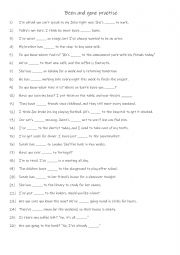
|
A2+-B1 Been & gone practise 2
Using "been" and "gone" properly helps students master the present perfect tense, which is essential for expressing completed actions that still impact the present.Misusing these words can lead to confusion about whether someone is still at a place or has already returned, so learning the difference is essential for clear communication. Each word i...
Level: intermediate
Age: 8-100
Type:
Downloads: 111
|
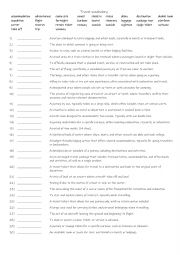
|
A2+-B1 30 travel related words
Students familiarise themselves with the 30 words and their meanings. Then they read the definitions and write the word being described in the space provided. Answers on page 2.
Level: intermediate
Age: 8-100
Type:
Downloads: 111
|
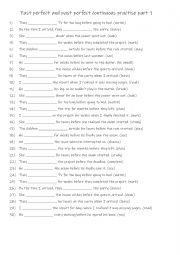
|
B1-B2 Past perfect and past perfect continuous practise Part 1
Learning the past perfect and past perfect continuous tenses is valuable for describing actions or events that occurred before a specific moment in the past. These tenses help students create a clear timeline when discussing sequences of events, making it easier to show cause and effect or clarify the order of actions. For instance, the past perfec...
Level: intermediate
Age: 9-100
Type:
Downloads: 111
|
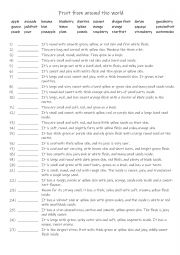
|
A1+-B1 Fruit from around the world
Learning definitions for fruit names from around the world is valuable because it broadens vocabulary and cultural understanding, enabling you to communicate effectively about food, nutrition, and travel. Recognising these fruits by name helps you read menus, understand recipes, and make informed choices when shopping or eating in diverse settings....
Level: elementary
Age: 8-100
Type:
Downloads: 111
|
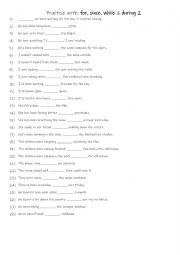
|
A2+-B1 Practise with for, since, while & during (2)
Learning to use for, since, during, and while is important because these words help student�s express time accurately in English, especially when talking about the duration and timing of events. For indicates the length of time an action takes place, while since pinpoints when an action started and continues until now, helping to show continuity. D...
Level: intermediate
Age: 9-100
Type:
Downloads: 111
|
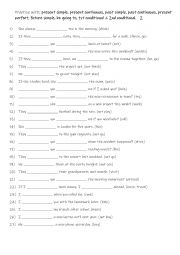
|
A2+-B1 Practise with present simple, present continuous, past simple, past continuous, present perfect, future simple, be going to, 1st conditional & 2nd conditional. 2
Practising these tenses allows students to speak confidently about everyday situations, past events, future plans, and hypothetical scenarios. It improves their ability to communicate with precision, enhances fluency, and prepares them for more advanced grammar. Mastery of these structures supports clearer expression of ideas and better understandi...
Level: intermediate
Age: 10-100
Type:
Downloads: 111
|
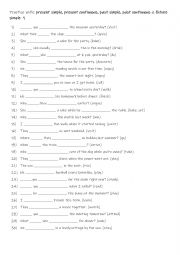
|
A1-A2 Practise with present simple, present continuous, past simple, past continuous & future simple 1
Students need to use present simple, present continuous, past simple, past continuous, and future simple to communicate effectively and express time-related ideas clearly in English. The present simple is used for routines, habits, and facts, while the present continuous describes ongoing or temporary actions. The past simple narrates completed eve...
Level: elementary
Age: 8-100
Type:
Downloads: 111
|
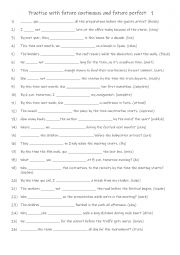
|
A2-B1 Practise with future continuous and future perfect 1
Learning the future continuous and future perfect tenses is really essential for expressing specific future actions and time relationships. The future continuous (e.g., I will be working at 3 PM tomorrow) describes actions that will be in progress at a particular moment in the future, which is useful for planning or predicting ongoing events. The f...
Level: intermediate
Age: 10-100
Type: worksheet
Downloads: 111
|
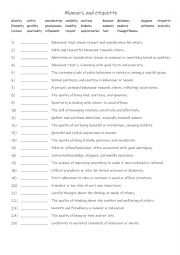
|
B1+-C1 25 nouns for manners and etiquette 1
Students should learn vocabulary related to manners and etiquette because these concepts are essential for building strong interpersonal relationships and navigating social situations with respect and confidence. These terms help students understand cultural expectations, making communication smoother and more effective in diverse environments. A...
Level: intermediate
Age: 10-100
Type:
Downloads: 111
|
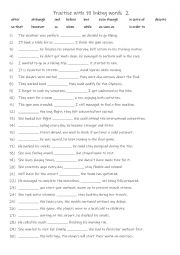
|
A2+-B1 Practise with 15 Linking words 2
Students should learn these linking words because they are essential for creating complex, logical sentences that convey relationships such as contrast (although, however), cause and effect (so that, in order to), and time (before, as soon as). Mastering them enhances writing and speaking by making language more sophisticated and engaging, as stude...
Level: intermediate
Age: 10-100
Type:
Downloads: 111
|
|
|
|
|












